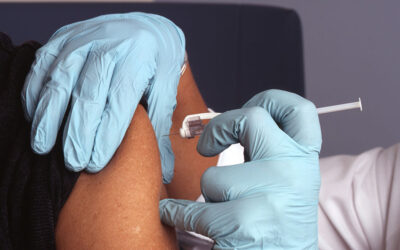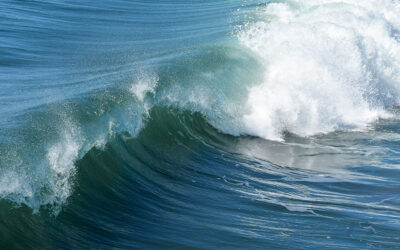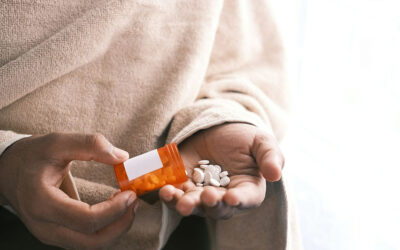Scientists discover bacteria exposed to microplastics, especially polystyrene, create a biofilm and perfect ‘breeding ground’ for antimicrobial resistance by housing resistant DNA and producing inactive cells that evade antibiotics.
“Biofilms are known to increase resistance 100-1000-fold. However, it was a matter of days before some of our samples passed clinical breakpoints (antibiotic concentrations rendered useless in a clinical setting),” explained Neila Gross, lead author of the study at Boston University.
The growing concern of antimicrobial resistance is one of the biggest health challenges we face today and antibiotics-our weapon against bacteria, are limited. Uncontrolled microbial resistance poses a real threat especially in low-income countries and there is an urgent need to understand how microbial resistance emerges.
Plastic pollution and antimicrobial resistance
Considering plastic use is alarmingly 20 times more than what it was 60 years ago another major global problem is plastic and microplastic pollution of which the negative environmental and health impacts is a hot topic. Now increased antimicrobial resistance is added to the growing list of concerns about microplastics.
Microplastics are tiny insoluble bits of plastics generated from degrading plastics and because of their size, buoyancy, and ability to stick to organic material they have invaded a range of environments from the highest mountain to the deep sea. They also pollute wastewater generated by human activities- running into rivers and oceans and even finding their way into the fish we eat.
Past research focussed on how antimicrobial resistance transmitted from person to person, but Professor Muhammad Zaman’s laboratory at Boston University is interested in the role of the environment plays in driving antimicrobial resistance.
The scientists addressed one of the big unanswered questions in this field of if and how bacteria in the presence of antibiotics interacting with microplastics develop resistance. It was also unknown until now how the size, type, and concentration of microplastics affect this resistance.
The team chose to study the widely used bacterium model E.coli because of its prevalence in the environment and infection rates in humans. Exposing E.coli to three types of plastic, glass and four broad-spectrum antibiotics commonly found in wastewater-a series of experiments enabled them to start to understand what could be going on in heavily polluted areas. The lowest concentration of antibiotic needed to stop bacterial growth in each experiment indicated the degree of antimicrobial resistance.
The experiments with microplastics formed denser biofilms compared to glass and exhibited the greatest antimicrobial resistance, the speed of which surprised the team. Mechanisms are not fully known but biofilm formation drives this resistance alongside the ability of microplastics to “select” phenotypes that form biofilms more easily.
“The microplastics only allow bacteria that are good biofilm formers to survive,” explained Gross.
“This is a problem because biofilms have 100-1000X times resistance profiles, so if microplastics are selected for bacteria that are better biofilm formers, we have a huge problem on our hands,” she continued.
Worryingly, even microplastics not in the presence of antibiotics can drive resistance that is stable and persistent. Of the plastics evaluated, polystyrene specifically facilitated the most resistance-a finding contrary to previous belief that the most water repellent materials attracted more bacteria.
The type or composition of the plastic not the size and concentration influence antimicrobial resistance. Bigger plastics can grow bigger biofilms while certain compositions like polystyrene have properties that aid bacteria attaching to it and promote biofilm growth.
Most vulnerable at risk
More studies are needed to determine if these results would be replicated in other bacterial species. Other questions about how different environmental conditions affect resistance and what the long-term consequences are for public in terms of emergence of new diseases, remain.
Antimicrobial resistance has increased in vulnerable populations living in low resource settings with inadequate healthcare. Now we understand a reason for this is poor wastewater management amplifying microplastic pollution-a potential driver of resistance.
“Our ability to quantify the rates and magnitude of resistance in the lab setting sets up future research for field studies. It also gives way to potential mathematical models that could predict the spread of AMR in a particular area based on the data in the paper,” explained Gross.
The researchers plan to take the study from the lab to the real world and determine if such antimicrobial resistance is found in places like refugee camps where people often live alongside excessive plastic pollution.
“We need to address the issue of microplastic-related disease and bring together scholars from diverse disciplines in science, engineering, social sciences, humanities, and policy with a high level of seriousness and urgency that it deserves,” says Gross.
The findings have implications for wastewater management and encourage monitoring of environmental microplastic and antibiotic levels.
With mounting evidence for the serious environmental and public health dangers of microplastics, surely the time is now for us globally to reduce their use.
“The bottom line is that plastics are overproduced and overconsumed. While scientific research has done an excellent job of highlighting the scale and impact of microplastic pollution, meaningful solutions require action at multiple levels—particularly from industry and policymakers,” remarked Gross.
Reference: Gross N, et al., Effects of microplastic concentration, composition, and size on Escherichia coli biofilm-associated antimicrobial resistance, Applied and Environmental Microbiology, (2025). DOI: 10.1128/aem.02282-24
Feature image credit: Sören Funk on Unsplash

















